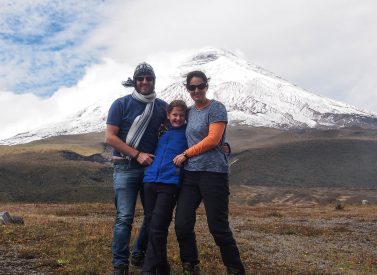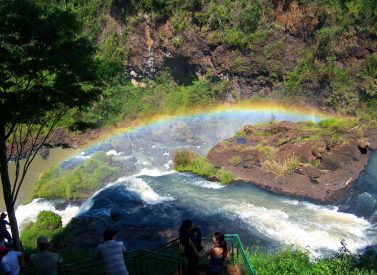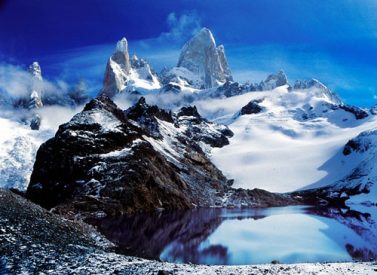
Tour of Chile’s Travel Highlights
We have designed this itinerary to bring you the top tours and highlights of Chile.
Chile is a country of extremes – from deserts to lakes, to remote islands and fine wines and vineyards.
This tour takes to all the highlights, from the north to the south and plenty in between, too.
Tick off those bucket list items in our holiday: Atacama desert, Easter Island, Patagonia and vineyards are at the top of many people’s.
More on travel highlights of Chile
This is a completely flexible itinerary designed to inspire you to travel to Chile. We can adapt and amend it to your needs.
We start by exploring the Atacama desert, full of amazing colours and light as well as hot springs, geysers and star-filled skies.
Next we head to the foot of South America and explore Patagonia, including Torres del Paine National Park, the jewel in Chile’s crown.
The capital of Santiago follows and acts as our launch point to the mysterious and remote Easter Island.
This incredible holiday winds downs with wine tasting and vineyards visits – this is the best of Chile.
Trip Highlights
Print Share Download as PDF-
Visit the Atacama desert - the driest in the world.
-
Explore Easter Island - an open air museum on the most remote island in the world.
-
Torres del Paine National Park - 8th wonder of the world, mountains and glaciers.
-
Be amazed by the Cuernos de Paine - "Horns of Paine" in the Torres del Paine National Park.
-
Sail the Last Hope Sound to see the Balmaceda and Serrano glaciers.
-
Guided walking tour of downtown Santiago - Chile's buzzing capital.
-
Experience the force of nature at the Tatio Geysers.
-
Taste Chilean wine in situ - visit to the heartland of Chile's wine country.
We did so many excellent and fun activities on this trip its hard to pin it down to one but I think for both of us the most enjoyable day was the Cactus Valley trek in the Atacama.
Koleaar, Tailor Made Chile
Full Itinerary
Day 1: Arrive Calama, transfer to hotel in San Pedro de Atacama, hotel
Arrive Calama.
Shared transfer to San Pedro de Atacama with Spanish-speaking driver only.
Approximately 90 minutes drive, overnight at hotel in San Pedro de Atacama.
Day 2: Cordillera de la Sal, Valle de la Luna, Valle de La Muerte (B)
Morning free to explore the town, church and Museum.
Afternoon shared tour to the Valle de La Muerte (Valley of Death) and Valle de La Luna (Valley of the Moon).
Depart from your Hotel in San Pedro of Atacama and head to the Cordillera de la Sal (Salt Mountain Range), where you will visit the Valley of the Moon (Valle de la Luna) that forms part of the National Flamingo Reservation. This unique place is famous for its natural mineral sculptures, one of them being “Las Tres Marías” (The Three Mary’s) formed by the wind erosion, resembling a lunar setting.
Next, visit Death Valley, a place that invites sand boarders to practice their favourite sport. Its salt formations appear to be sculptures and works of art. Finally, end your trip with a magical sunset at the Kari Viewpoint, one of the highest points of the “Cordillera de la Sal” (Salt Mountain Range); before returning to your hotel in San Pedro de Atacama.
Day 3: Atacama salt flat and Altiplanic lakes (B,L)
Full day shared tour with English speaking guide, Atacama Salt Flatas and altiplanic lakes Meñiques and Miscanti. Box lunch included.
Depart from your hotel in San Pedro de Atacama heading for the Atacama Salt Flat, one of the largest in the world.
Within the Salt Flat, in the area known as Soncor and the Chaxa Lagoon, you find the three species of native pink flamingos.
Continue and travel further within the Altiplano, reaching 4,300m/14,108ft above sea level. Arrive at the Miñique and Miscanti lagoons, sitting at the foothill of the Miñique and Miscanti volcanoes, and admire the solitary beauty of the place.
After this visit, we return to Socaire for lunch at one of the rustic village kitchens where they use the ingredients cultivated from the ancestral agricultural terraces.
Finally, we make a stop in the village of Toconao, where we visit the main square, the bell tower built in 1750 and made of cactus wood, mud and straw, and the church of San Lucas. Both of these have been National Monuments since 1951.
Return to your hotel in San Pedro de Atacama.
Day 4: Tatio geysers, star gazing tour (B)
Shared Tatio geysers tour. Pick up at dawn from your Hotel in San Pedro de Atacama.
Depart towards the Altiplano, reaching an altitude of 4,320m/14,173ft above sea level, to visit The Tatio Geysers; one of the most important geothermal fields in the world.
The extreme cold temperatures mean that the fumaroles can easily reach 10 metres high and the geysers up to 8 metres. After witnessing the geothermal show there is time for a swim in the nearby natural hot spring pool.
On the return journey there is a stop at the wetlands of Putana, to admire the view with the Colorado Volcano in the background and then continue to the village of Machuca, a village that reflects the original Altiplanic architecture particularly in its church.
Return to the hotel in San Pedro de Atacama, arriving early afternoon.
Afternoon free.
In the evening shared star-gazing tour, English commentary, with transfers there and back. This is a real highlight of any trip to Atacama. Whether using telescopes or your own eyes, if the skies are clear then Atacama offers some of the best views to space from anywhere on earth.
Note: Please check the lunar calendar with us before booking, as tours cannot run close to full moons.
Day 5: Arrive Punta Arenas, transfer, hotel (B)
Shared transfer to Calama airport, Spanish speaking driver only.
Fly to Santiago and connect with flight to Punta Arenas. Total flying time approximately 6 hours plus connection time in Santiago.
Private transfer to hotel, Spanish speaking driver only.
Day 6: Bus to Puerto Natales, transfer to hotel (B)
Transfer from the hotel to the bus station.
Scheduled bus to Puerto Natales, 3 hour bus journey and transfer to the hotel.
Day 7: Sail to Balmaceda and Serrano Glaciers, hotel (B,L)
Full day shared sailing on the 21 de Mayo to the Balmaceda and Serrano Glaciers with barbecue lunch.
Transfer to the port to board the 21 de Mayo.
Set sail on the Last Hope Sound heading for the Balmaceda and Serrano Glaciers.
Late morning arrival to visit the Glaciers.
Continue to the Estancia Perales for a typical Patagonian Barbecue lunch before sailing back to Puerto Natales.
Day 8: Full day tour to Torres del Paine National Park, hotel (B)
Full day shared tour to the Torres del Paine National Park.
We’ll take a van or bus into the park with our guide and visit some of the highlights of Torres del Paine National park.
First is the Natural Monument Milodon Cave. The largest of these caves houses the replica of the extinct Milodon, a giant herbivore that has probably been extinguished in the late Pleistocene era.
Then, we visit the National Park Torres del Paine, undoubtedly one of the most beautiful natural places in the world, and recently chosen as the Eighth Wonder of the World. Amarga Lagoon, overlooking the Horns of Paine, Salto Grande and Grey Lake are on the list of stops.
At noon we enjoy lunch at a restaurant in the park (not included in the price).
At the end of the tour drop off at Laguna Amarga / Sarmiento Administration Centre.
Transfer to the hotel. Overnight, breakfast included, hotel in Torres del Paine Serrano area.
Day 9: Day free in Torres del Paine National Park, hotel (B)
Day free to organise excursion/trek direct with hotel or explore under your own steam.
Day 10: Day free in Torres del Paine National Park, hotel (B)
Day free to organise excursion/trek direct with hotel or explore under your own steam.
Day 11: Bus to Puerto Natales, transfer to hotel (B)
Transfer to administration centre.
Scheduled bus to Puerto Natales, transfer to hotel.
Day 12: Bus to Punta Arenas airport, fly to Santiago, arrival transfer to hotel (B)
Transfer to the bus station, scheduled bus to Punta Arenas airport.
The journey time is approximately 3.5 hours.
Fly to Santiago, approximately 4-hour flight.
Met on arrival and transfer to the hotel.
Day 13: Santiago walking tour, hotel (B)
Half day private walking tour of Santiago including downtown and funicular up San Cristobal Hill.
English-speaking guide – this tour can be Tuesday to Sunday.
Departure from our hotel in Santiago to visit the Santa Lucia Hill, where the city was founded in 1541. This hill is located in the heart of the city and it gives us an overview of the centre of Santiago.
Then, we walk to Lastarria neighbourhood, a cultural, gastronomic and tourist centre and continue through the Parque Forestal reaching the bohemian Bellavista neighbourhood.
From here we take the funicular railway up San Cristobal Hill, and from the Immaculate Conception Sanctuary, where a huge statue of the Virgin Mary looks over the city, we have great views of Santiago.
Return to the hotel.
Day 14: Transfer to airport, fly to Easter Island, transfer to hotel (B)
Transfer from the hotel to the airport, fly to Easter Island, approximately 5 hour flight.
Arrive Easter Island, transfer to the hotel.
Day 15: Full day tour Moai route, hotel (B,L)
Full day shared tour along the Moai Route visiting:
- Ahu Vaihu, a ceremonial site with scattered fallen “moais” (statues);
- Ahu Akahanga, where the first king of the island was buried;
- Rano Raraku Volcano where the natives carved the giant statues from the volcano’s quarry as well as the largets Moai on the island;
- Ahu Tongariki, the largest Ahu (platform) on the Island with 15 Moais;
- Te Pito Kura, ancient settlement;
- Anakena Beach. Box lunch included.
In the afternoon, return to the hotel.
Day 16: Half day tour Rano Kao and half day tour Ahu Akivi, hotel (B)
Half-day shared tour to Rano Kao Volcano and its large fresh-water lake covered by totora.
Perched on the top of the crater is the Ceremonial Centre of Orongo, where every year the Birdman or Tangata Manu ceremony is celebrated. Here we see more than 100 petroglyphs representing the Make-Make god and the Manutara seabird, amongst others.
We visit the Ana Kai Tangata cave, a cavern housing a large array of prehistoric paintings where the Easter Island people took refuge during times of war.
In the afternoon, shared tour to Ahu Akivi, a large platform with 7 Moais facing the sea; the Ana Tepahu Caverns and the quarry of Puna Pau, where the Pukaos, top part of the Moais -Pukao, means “typical hairstyle”-, were sculpted.
Finally, we visit the Ahu Tahai.
Return to the hotel.
Day 17: Transfer to airport, fly to Santiago, transfer to Santa Cruz in the Colchagua Valley, hotel (B)
Transfer to the airport, fly to Santiago – approximately 5 hours flying time.
Private transfer to the hotel in Santa Cruz (approx. 3.5 hours).
Santa Cruz is a typical rural town in the heart of the Colchagua Valley in Chile’s wine district.
Day 18: Winery tour, hotel (B)
Half day shared tour to Santa Cruz winery.
Tour of the winery and tastings included.
Overnight, breakfast included, hotel in Santa Cruz.
Day 19: Day free in Santa Cruz, hotel (B)
Day free to explore.
Visit a winery, explore the Colchagua Muesuem or just soak up the sun by a pool, weather and season permitting.
Overnight, breakfast included, hotel in Santa Cruz.
Day 20: Transfer to Santiago airport (B)
Transfer to Santiago airport, tour ends
Prices From $5,537 / £4,502 per person
What's Included?
Transfers, tours as listed, meals (B=breakfast, L=lunch, D=dinner), transportation, services and accommodation all as described in the itinerary, park entry fees
What's Not Included?
Flights (we can help to look for flights), services not mentioned, extras, personal items, insurance, Easter Island tax, tips, alcoholic or soft drinks
Accommodation
Hotels, based on 2-3* clean, central and with private bathroom.
Upgrades possible at extra cost (where available).
Tour Staff
All our guides are qualified, local and English-speaking and will help you get the most out of your trip.
You meet different guides for different tours, each with specialist knowledge of the areas you are visiting.
Meals
Almost all dietary requirements can be catered for if we are notified in advance, please ask for more information.
Breakfasts at the hotels will generally consist of hot drinks, toast, jams, cereals, fruits and eggs.
Lunch when provided will either be a packed lunch of sandwiches, fruit and snacks. If at a local restaurant, it will often include soup to start, a main of rice with meat and/or veg. and a small pudding. Dinners are often similar.
When eating out under your own steam, there are a host of restaurants to choose from in San Pedro de Atacama, Santiago, Puerto Natales, Easter Island and other towns and cities.
In Paine/vineyards, meals are either provided at the hotels/estancias and vary depending on final hotel standard chosen.
Note: In remote areas like Paine/Easter Islands, meals may vary depending on availability of certain items.
Activity Level
This trip is open to people with a penchant for exploring, with a positive attitude and outlook. The days are not strenuous, in walking terms, but we are out and about seeing things on a daily basis.
Dust can be a problem and quite extremes of temperature, warm in the day and cold at night the moment the sun goes down.
You don’t need a specific fitness level as such, but to be adaptable, enjoy being outdoors and viewing sites etc.
We can adapt the trip to more active if you wish.
There is some high altitude to contend with in San Pedro de Atacama, but we factor that into the trips we offer there.
Practical Information
An introduction to Chile
Chile is the land of contrasts, from verdant vineyards to driest desert, deep fjords and towering glaciated volcanoes.
A narrow but incredibly long, snake-like country, Chile’s unusual geography features more than 5,000km of South Pacific Ocean coast. The country is almost 4,400km long but barely more than 160km at its widest.
It is best divided into general regions, all of which offer spectacular landscapes and identities of their own.
This variety means Chile is the land where almost every activity is possible. Hiking, biking, rafting and kayaking.
Or climbing, cruising, fishing, horse riding, wine tasting.
Or simply eating great food, relaxing and exploring.
Geography of Chile
Patagonia
Trekking heaven. Paine National Park lies in Patagonia and features some of the best trekking in South America. With no altitude worries here, hikers enjoy an unrivalled mix of access to wild flora and fauna that exists in this massif. It is at once windswept, and then balmy. Paine National Park is a must see for walkers visiting South America.
Northern Patagonia is the least densely populated part of the country – spectacular virgin scenery make this a hidden gem and superb area for trekking, boating and horse riding.
And that’s before you think about possibly cruising through fjords, or kayaking them, flying to Antartica or staying at a working hacienda.
Easter Island
Iconic, Easter Island is an archaeological treasure. Here you will find the famous Moai stone statues, as well as caves and rocks decorated with etched petroglyphs and painted pictographs.
Northern Chile
Northern Chile features the Atacama, the driest desert with the clearest skies in the world, is alive with active volcanoes replete with spitting geysers mixed with archaeological wonders and fantastic rock formations.
Central Chile is the heart of Chile and includes the capital Santiago. With its Mediterranean climate of hot dry summers and mild wet winters, this central valley produces some of South America’s finest wines, Colchagua Valley to name but one.
Here, the Andean mountain chain soars more than 6,000m above sea level. Chile’s traditional symbols such as huaso (cowboy) and cueca (national dance) originate here, an area which is rich in agriculture and produces most of Chile’s export fruit.
In winter, skiers are attracted to this tasting the promise of some fabulous snow on the huge peaks which overlook Santiago.
Southern Chile and the Lake District
Lush and verdant, The Lake District area is the place to climb snow-capped volcanoes by day while relaxing next to stunning glacial lakes by evening. You can walk, bike, raft, cruise and drive your way around this beautiful region.
Central, southern and Patagonia Andes all present different challenges to mountaineers and trekkers. Options are varied in the central Andes with many of the Patagonian peaks remaining unexplored and unsummitted.
Weather in Chile
Chile’s climate varies greatly, owing to its sheer length, variation of terrain and varying altitudes and latitudes.
Lake District and Patagonia
In the south of Chile, here temperatures drop a little compared to the rest of Chile.
It can be better to go in the Austral summer (Oct-March). Daylight hours are much longer at this time, with Nov-Feb being popular times to visit. October and March can be very colourful and vivid with less visitors, but weather can be more blustery.
In Patagonia, the weather is, putting it mildly, variable, and variable on a daily basis. It is usually cool and windy all year round but seldom does the temperature fall below freezing point. Some days start with snow and end in balmy sunshine. It is always interesting, and can range from 10°C-20°C in the summer, although the wind can make it feel chilly.
The vast unbroken stretch of ocean to the west and south of the South American continent leaves the Patagonian Andes very exposed to the saturated winds that circle the Antarctic landmass. Also the South Patagonia Ice field influence makes the weather hard to predict. In spring or early summer fine weather may deteriorate almost without warning, bringing rains and eventually snow. Even in summer (Dec-Mar) you should come prepared to find cold, strong winds (up to 130 km/hr) and rainfalls. The summer’s average temperature is 11ºC/52ºF (24ºC max, 2ºC min).
Winter visits to these southern areas are possible, but many hotels close and not all trips are possible. Daylight hours can be very short, but the lack of visitors can greatly improve chances of seeing wildlife in parks such as Paine.
The Lake District’s temperate climate can be said to resemble that of the UK, with rain possible but also enjoying long spells of fine, fresh weather in the summer (Oct-March).
Easter Island
Although sub-tropical and essentially a year-round destination, Dec-Feb are the most popular times to visit Easter Island as it is summer there and temperatures average 24°C. There can be colder days and it can be humid too.
The winter months (Jun-Oct) on Easter Island are not overly cold, but they can be cool. The average low temperature is 16°C but there is usually a wind at this time of year that makes the temperature feel cooler than it really is.
The wind rarely stops blowing at this time of year.
Northern Chile
The north of the country lies in the tropical zone, but in the main is desert. It is dry and sunny all year round, but does get cold at night time in the high altitude areas.
In winter (June-Aug) the average daytime temperature is 22°C (72°F) and by night 4°C (39°F), descending to -2°C (28°F) in extreme cases.
During summer (Jan-Mar) the temperature fluctuates between 27°C (81°F) and a minimum of 16°C (61°F) at night, reaching maximums of 32°C (90°F), with occasional showers.
Central Valley
The wine growers love the central valley, which has a suitable Mediterranean climate of hot dry summers (Nov-March).
Then, temperatures range from 17°C in the evening and can go up to 30°C inland. It is cooler during the day on the coast.
During winter (May-Sept), which is essentially mild and wet, temperatures inland can vary from 5°C to 18°C during the day, and a bit warmer on the coast.
Autumn (Mar-April) and Spring (Oct-Nov) are lovely times to visit, although hotels in Santiago can book out in March, October and November, as it is conference season.
Kit list
Good kit is vital for every trip.
Book with Andean Trails and get 15% off Páramo’s fantastic ethical and high performance outdoor gear.
Overview
Chile has a wide range of climates from arid deserts to bracingly cold Patagonia.
When planning for these changeable climatic conditions you will encounter across Chile, layering is the most practical and versatile clothing system.
The sun is very strong throughout the country, so good sun cream, a hat and sunglasses are vital.
It can also get very cold at night time especially in the mountains. Jumpers, fleeces and warms hats – which you can buy there – are also essential.
Give plenty of thought to kit selection, and try to keep weight down.
Below is a more detailed guide.
Detailed kit list
- Medium weight parka or a down jacket.
- Waterproof jacket and trousers. The jacket needs to be water proof and roomy. Side-zip pants are recommended.
- 2-3 long-sleeve shirts – no cotton
- 2-3 short-sleeve T-shirts – no cotton
- 2 pair of hiking trousers- cotton or synthetic material (no jeans)
- 1 fleece or sweat trousers (for cold evenings)
- 2 pair hiking shorts
- Long thermals – synthetic or wool – light to medium weight top & bottoms.
- 2-3 mid-weight (wool or synthetic) socks.
- 2-3 liner socks if needed
- Athletic-type socks, several pairs, city use
- Hiking boots that are waterproof and well broken-in.
- Running/tennis shoes or sandals are very comfortable when you are in cities
- 1 lightweight wool sweater or windproof fleece
- 1 wool or synthetic warm hat.
- 1 light sun hat with a wide brim.
- 1 pair of medium-weight wool or synthetic gloves
- Broad-brimmed sunhat, essential.
- Sunglasses with UV filter.
- Scarf for cold.
- Bandanna – to protect neck from strong sun.
- Daypack (at least 30 litres). Comfortable and with waterproof lining or cover.
- Water bottle (2 litres approx.) & purification tablets.
- Personal first-aid kit to include: painkillers, plasters (band-aids), moleskin, anti-biotic cream, general antibiotics (ask your GP), after-bite (tiger balm), anti-diarrhoea tablets, throat lozenges, re-hydration salts & personal medication.
- Insect repellent (just in case)
- Towel & wash-kit.
- Wet Wipes/antiseptic hand-wash cream.
- Sunscreen (factor 30+) and lip salve.
- Head-lamp (plus spare bulb and batteries).
- Penknife.
- Travel alarm clock.
- Plastic bags – ‘Zip-loc’ & tough bin liners.
- Camera and film / memory cards (take at least twice the amount you think you will need!).
- Book, e-book, mp3 player/ipod or other to help pass the time.
- Binoculars.
- Spanish/English phrasebook.
- Extra snacks i.e. cereal bars or favourite chocolate bars.
Miscellaneous others
- Money belt.
- Passport.
- U.S. dollars cash, mixed-denomination notes, undamaged and unmarked.
- ATM cash/credit card.
- Any inoculation certificates.
- Personal & medical insurance certificates.
- Presents e.g. Postcards from home.
- Comfortable clothes for travel, smart clothes for night life, especially in big cities.
ATOL holiday protection
Andean Trails has 25 years of experience of putting together the best South America holidays.
We pay a fee to the CAA for every licensable passenger we book since we hold an Air Travel Organiser’s Licence granted by the Civil Aviation Authority. In the unlikely event of our insolvency, the CAA will ensure that you are not stranded abroad and will arrange to refund any money you have paid to us for an advance booking.
We also offer ATOL (Civil Aviation Authority) protected holidays to give our customers peace of mind when booking and travelling.
When you buy an ATOL protected air holiday package from Andean Trails Ltd you will receive a Confirmation Invoice from us confirming your arrangements and your protection under our Air Travel Organiser’s Licence number 6275.
You can read more about ATOL, who is covered and what protections you have if not ATOL-covered, on our ATOL page.
What is ATOL?
The CAA’s ATOL scheme offers protection to your money and your holiday if you book with us. Not everybody is covered (see ‘Who is covered?’ for more), as you must purchase an ‘air package holiday’ with Andean Trails to be protected.
And ‘air package holiday’ is defined as including a flight and some ground services (hotel, transfer, trek etc). This is also known as an ‘ATOL-protected holiday’.
Who is covered?
To be covered by ATOL, you must book a flight and some ground services with us and be from the UK. If you are from the UK and only book ground services and no flights, you are not covered by ATOL (see below for more on how non-ATOL clients are covered).
If you are outside the UK and buy flights with us, you will be ATOL protected IF any of the flights booked with Andean Trails touches/stops in the UK at any point during your holiday package booked with us.
If you buy your flights elsewhere, please check with that agent if you are ATOL protected. Be careful with online flight purchases and make sure you know what protection you have, if any, before paying for flights.
Not all holiday or travel services offered and sold by us will be protected by the ATOL scheme. Please ask us to confirm what protection may apply to your booking.
For land only holidays not involving any air travel, in accordance with “The Package Travel, Package Holidays and Package Tours Regulations 1992”, all UK passengers booking with Andean Trails Ltd. are fully protected for the initial deposit and subsequently the balance of all money paid to us, arising from cancellation or curtailment of travel arrangements due to the insolvency of Andean Trails.
I’m not ATOL covered, what protection do I have?
If you are not ATOL covered, any payments you make to us go to a Trust account.
We can only access this money once your tour has been completed, meaning that if anything happens to Andean Trails Limited while you are on holiday, then your money is secure and you can either complete the trip or be able to make it home.
If you pay for your holiday with a credit card, some offer payment protection – please check with your cardholder.
You also should have cancellation protection written into your insurance (which we recommend you have at the time of booking) in case you need to cancel.
Chile Lake District
The Chilean Lake district is an area of snow capped volcanoes that overlooks pristine lakes surrounded by forests and rolling countryside.
The Northern gateway is Temuco Airport. A short drive is Villarrica Lake overlooked by the volcano of the same name. The monkey puzzle tree is autochthonous to the region and can be found all over particularly in Conguillio National park.
The town of Pucon is a great base from which to explore the nearby National parks, hot springs, Mapuche indigenous settlements and for the more adventurous rafting, canopy, trekking and climbing.
In the middle of the region you will find the private Huilo Huilo Biological Reserve, a protected area of Patagonian cold rain forest.
The Southern sector, whose gateway is Puerto Montt, is dominated by Lake Llanquihue and the conical Osorno Volcano.
A popular base is the town of Puerto Varas on the lake shore from where one can visit the local beauty spots or set off on adventures that include biking, kayak, trekking, rafting and much more.
This area combines very well with the Argentine Lake district and the towns of Bariloche and San Martin de Los Andes.
Chile, Atacama desert
The Atacama desert covers the northern quarter of Chile.
Said to be the driest in the world it is a melting pot of earthy tones ( red, yellow, purples, browns etc ), amazing rock formations, stunning mountains and volcanoes, flamingo speckled salt flats and some of the clearest skies on the planet.
San Pedro de Atacama is the ideal base to explore the nearby geysers, hot springs, salt flats, lakes, and at night be amazed by the star studded skies.
Those after adventure can pass the time trekking, biking, horse riding and exploring.
For a bit of culture the pre Columbian museum, colonial churches and pre Columbian archaeological sites will keep one fascinated and for the nature enthusiast the scenery, wildlife and environment won’t disappoint.
Chilean Patagonia
Chilean Patagonia is a pristine wilderness of fjords, glaciers, plains, mountains and forests.
Southern Patagonia’s main attraction is the Torres del Paine National park. The granite spires attract many visitors to what some have called the 8th Wonder of the World. The park is a trekkers paradise with two classic treks, the Paine W and the Paine Circuit.
Northern Patagonia, the Aysen region, is one of the least populated parts of the country and is blessed with spectacular countryside.
The main airport is Balmaceda near the city of Coyhaique and must see places include Lake General Carrera and the Marble Caves, The San Rafael Glacier, the Quelat Hanging Glacier as well as driving the Austral Road.
The Futaleufu River is a must for white water enthusiasts.
The region also offers great horseback opportunities as well as kayaking ones. Nature enthusiasts can admire the impressive scenery, imposing glaciers and fascinating wildlife and flora.
Aysen, Chile
The Aysen region is one of the great undiscovered destinations of Chilean Patagonia.
Here you will find the world renowned white-water of the Futaleufu river, the marble caves on Lake General Carrera, the San Rafael Glacier, the Quelat Hanging Glacier and stunning scenery.
This part of the country is the least densely populated, so if you want to get away from the crowds this is the place to come.
Access has always been difficult to the region – the principal airport Balmaceda and it was only opened up less than 30 years ago, with the construction of the Austral Road from north to south.
Central Coast of Chile
The central coast is a rugged coastline very reminiscent of California – here you will find a string of small fishing coves, holiday towns and cities.
The ramshackle city of Valparaiso, with its colourful houses perched on the hills overlooking the bay, is a cultural icon, with its Museum home of Pablo Neruda, the Chilean Nobel prize-winning poet.
The coastal town of Zapallar is a great place to get away from it all and recharge the batteries.
The Humboldt current means cold water temperatures and currents that are not conducive to sea swimming, but does provide some of the best seafood in the world.
There are plenty of seabirds, including pelicans, and seals as well as sea lions.
Puerto Natales, Chile
Puerto Natales has the feel of a small frontier town.
Located on the banks of the Last Hope Sound this town had its origins in the shipping out of lamb from the local estancias.
Now it is the gateway to the Torres del Paine National Park and boasts an impressive selection of accommodation and restaurants.
Nearby attractions include the Milodon Cave and a full day sailing tour to the Balmaceda and Serrano Glaciers.
If you have time it’s worth trekking to the top of the nearby Dorotea hill for a spectacular view of the surrounding country side.
Santiago, Chile
Santiago, Chile’s vibrant capital sits in the middle of this thin long country flanked by some of the highest peaks of the Andes.
The city reflects the prosperity of the Chilean economy with a modern architecture particularly in the east of the city.
However there is still plenty for traditionalist to explore in the centre of the city including the Moneda Palace, Cathedral, Central Market with its array of fish restaurants and the pre-Columbian Museum.
There are lots of day trips nearby, from vineyard visits to Valparaiso, making Santiago a great base from which to explore.
Torres del Paine National Park, Chile
The granite spires of Chile’s Torres del Paine National Park are one of the great draws to Patagonia.
The Horns of Paine and the Towers of Paine look down on a network of valleys and lakes punctured by the odd glacier, which are a trekker’s paradise.
There are two classic treks, the Paine W and the more challenging Paine Circuit.
As well as the spectacular scenery the flora and fauna are great attractions and you will find many herds of guanacos as well as rheas, the odd Pudu – a rare miniature deer.
And if you are lucky, even a puma.
Vineyards of Chile
Chile is home to world famous wines and vineyards.
Its wine country surrounds the Metropolitan region of the capital, Santiago, making visits easy.
Many wineries can be visited as day trips from Santiago or there is the option to stay in a winery or hotel in the wine country.
The Colchagua Valley, a 3-hour drive from the city, has become a popular destination with a good offer of hotels in and around the town of Santa Cruz.
There are opportunities for visits to the wineries with tours of the production facilities and tastings. Mountain bike and horse back rides are also an option.
This part of Chile’s is also the heartland of Chiles rural traditions and the Chilean Huaso – cowboy and its traditional dances and music.
Prices From $5,537 / £4,502 per person
2023 to March 2024 per person price
Shared room basis, minimum 2 people
Single supplement applies
Upgrades available


Dates & Prices
Prices From $5,537 / £4,502 per person
2023 to March 2024 per person price
Shared room basis, minimum 2 people
Single supplement applies
Upgrades available
Can’t find what you’re looking for? Get in Touch
+44 (0)131 378 5593
+44 (0)131 554 6025



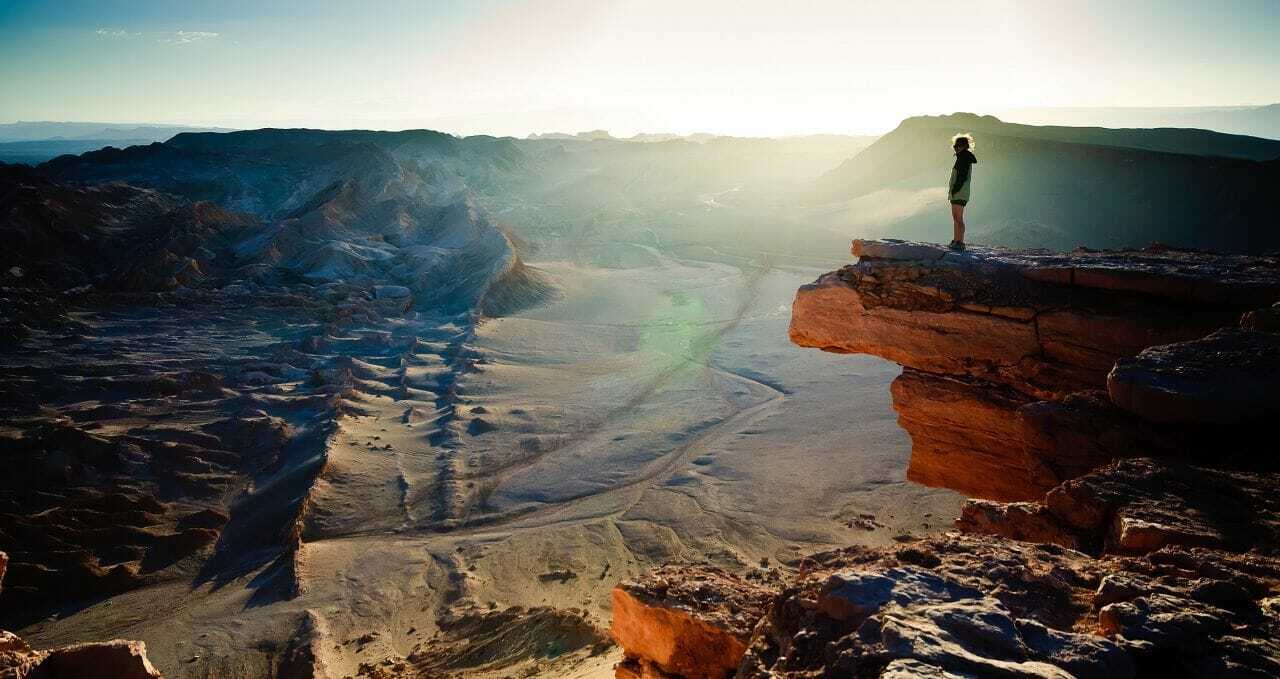
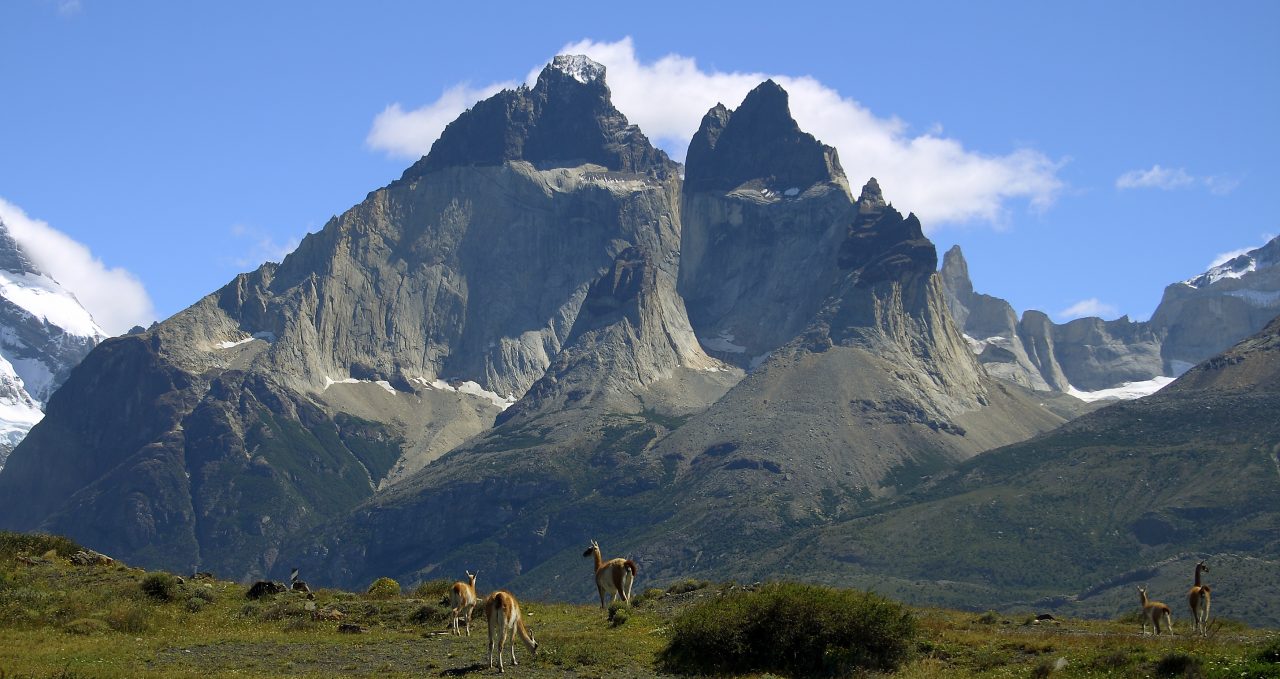
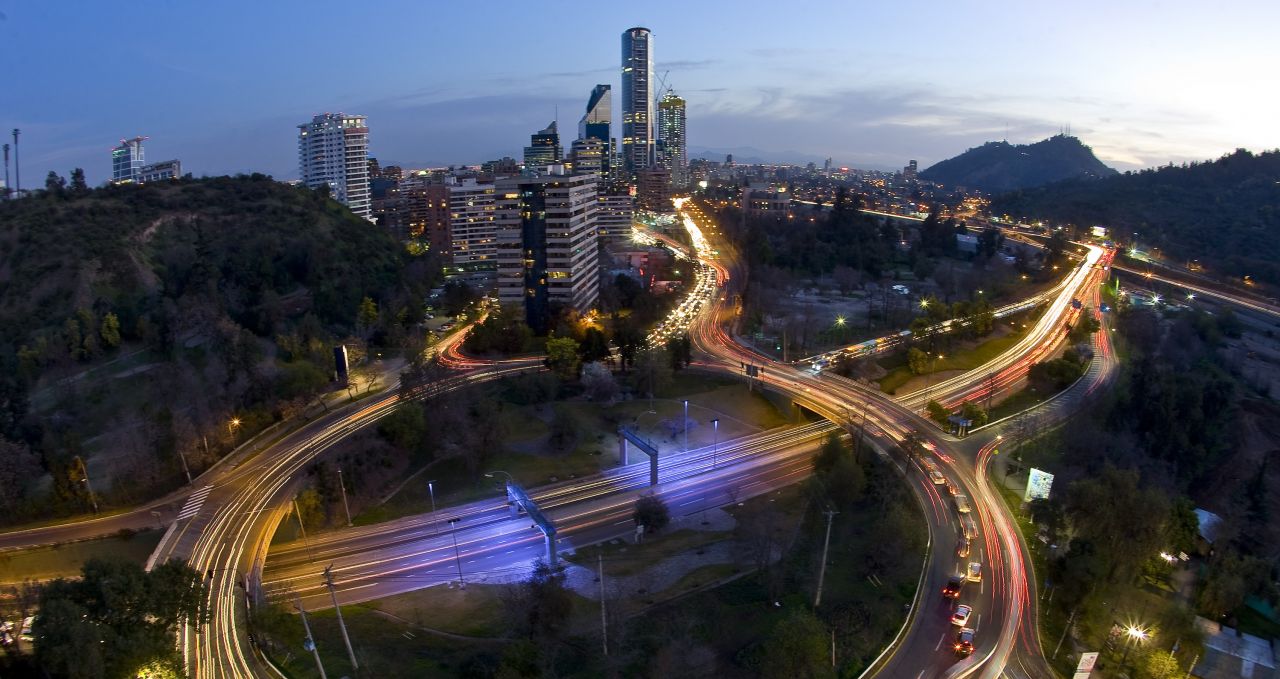
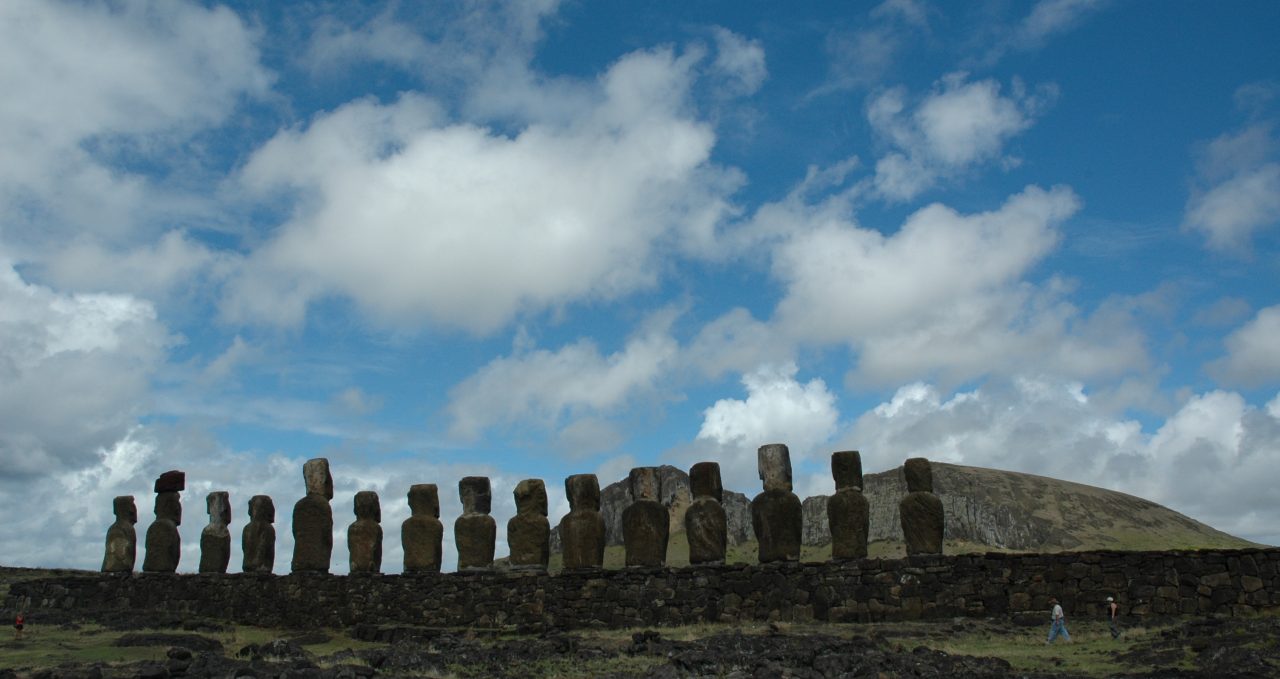
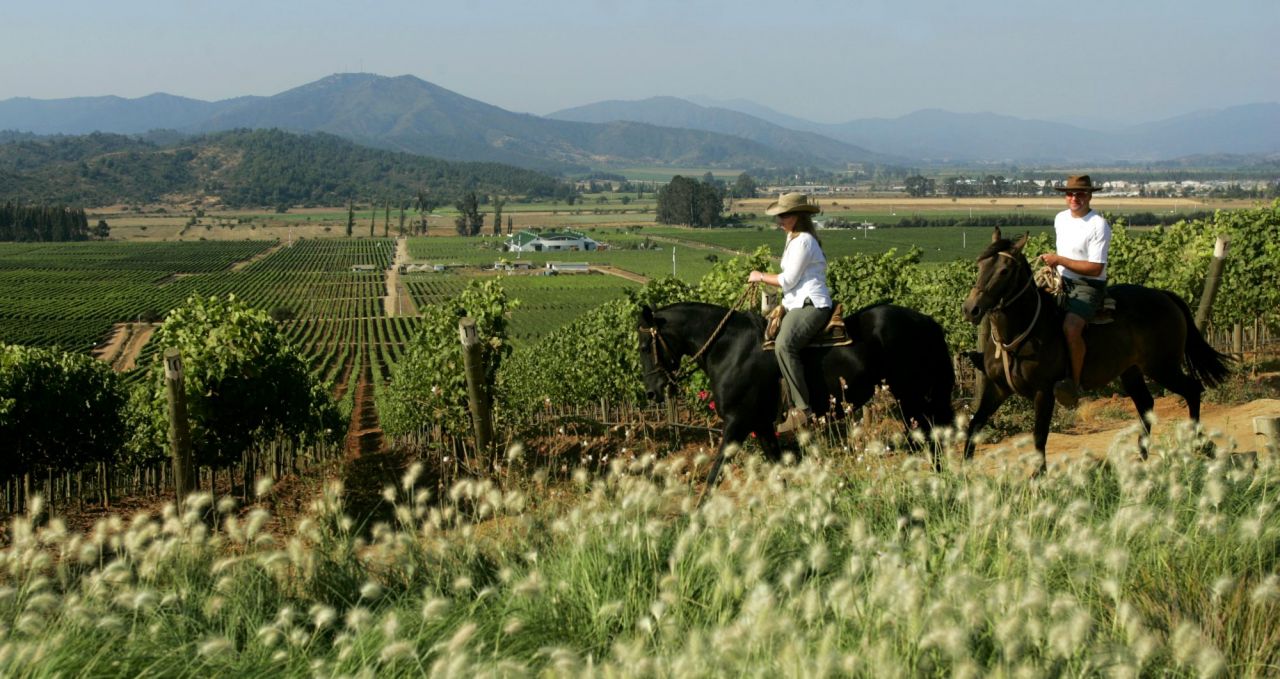
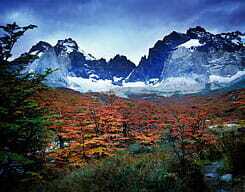
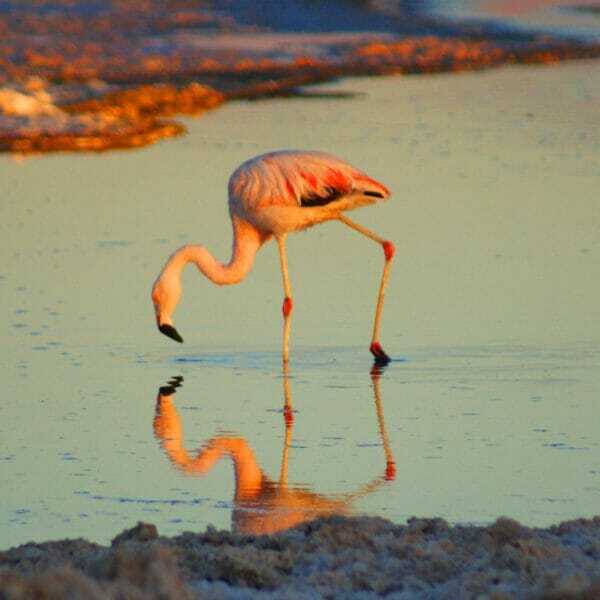
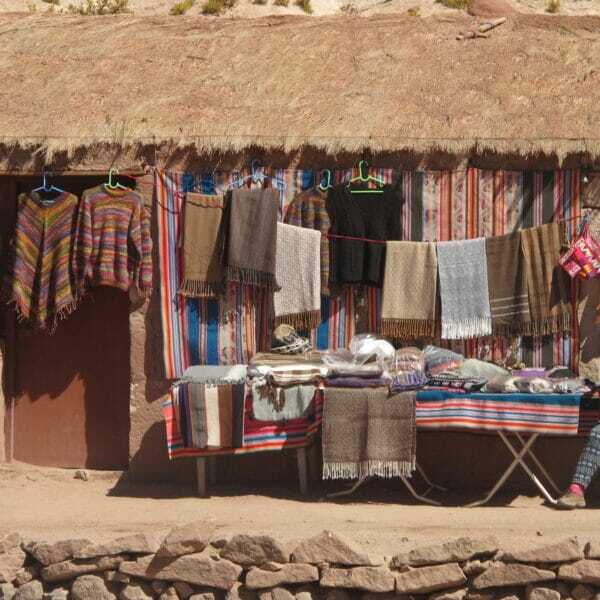
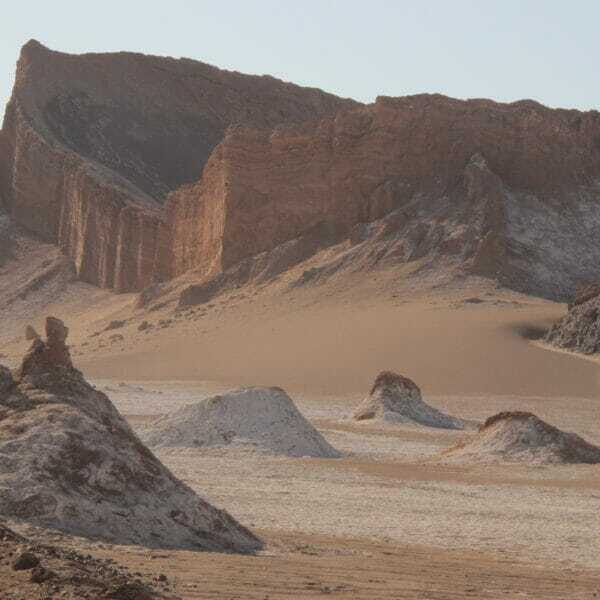
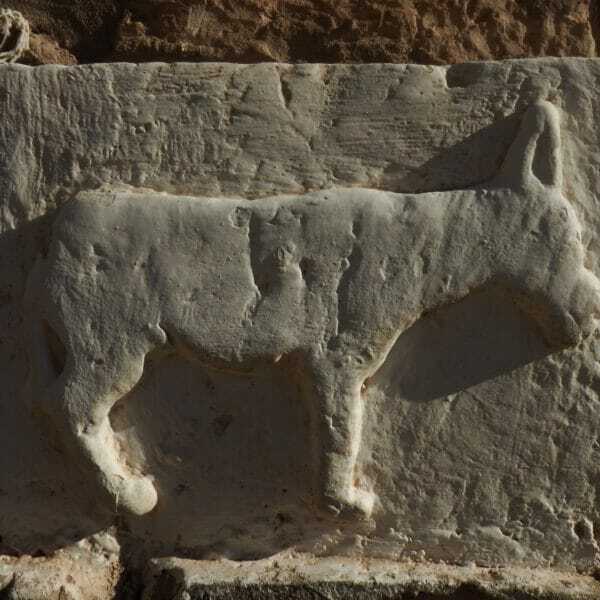
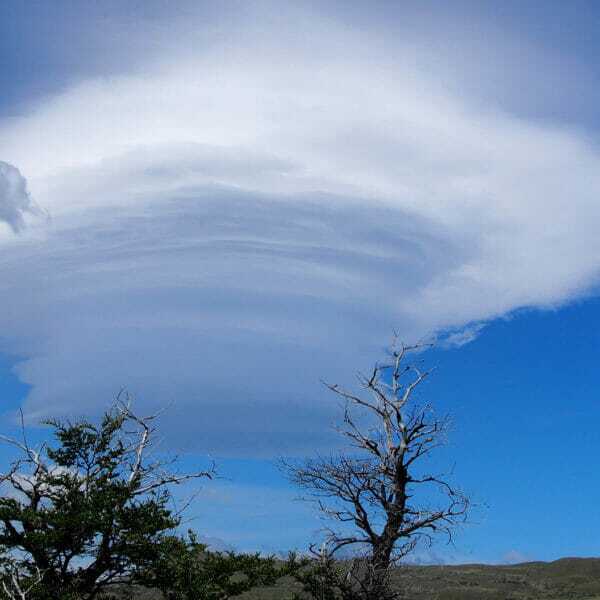
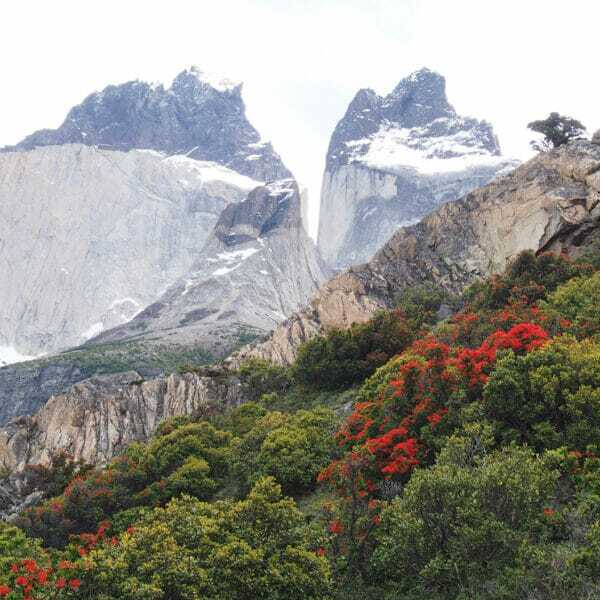
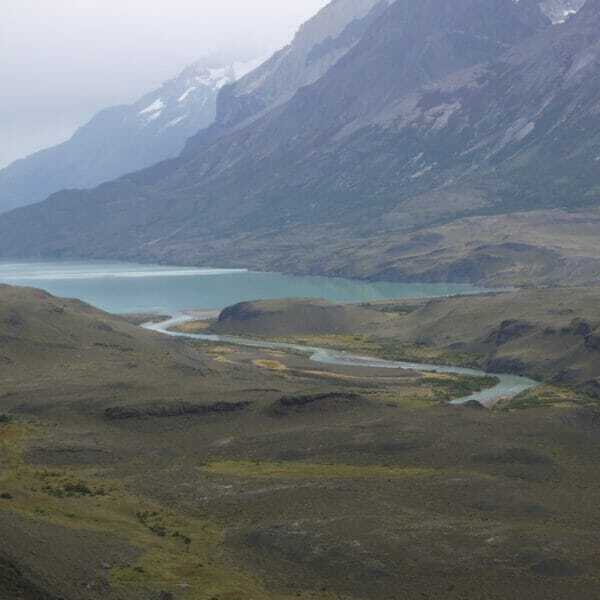
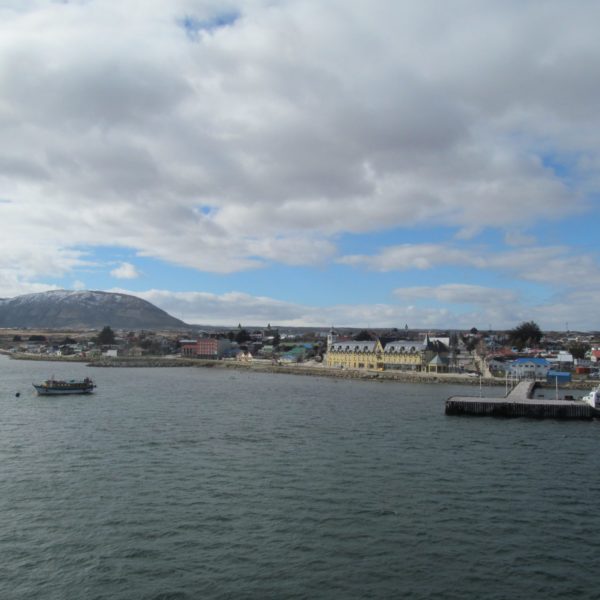
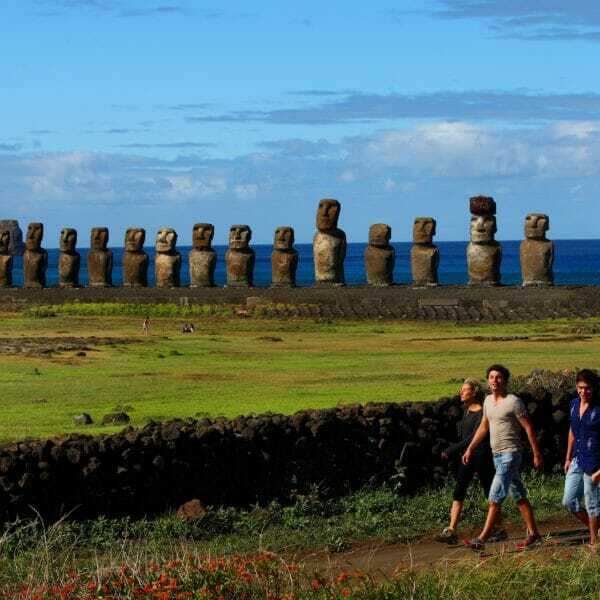
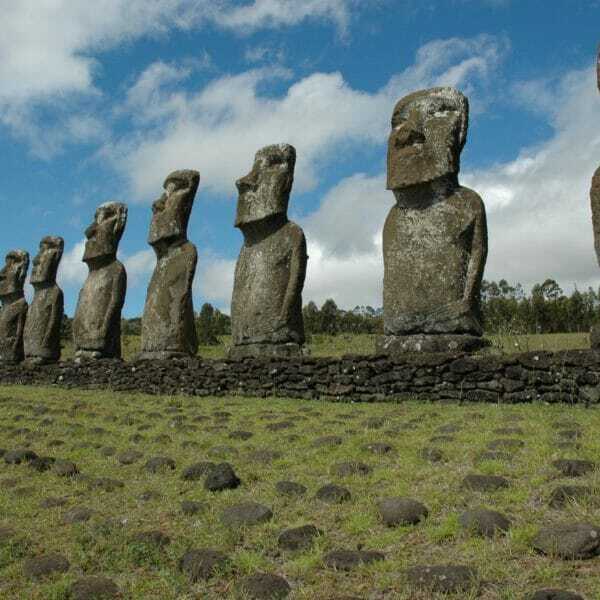
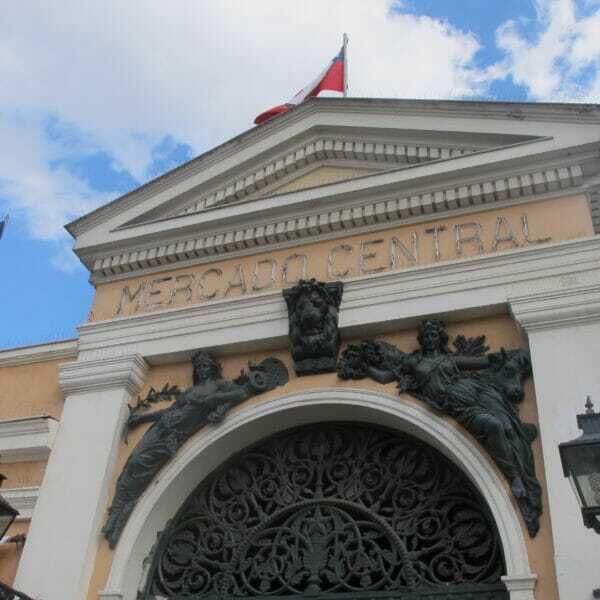
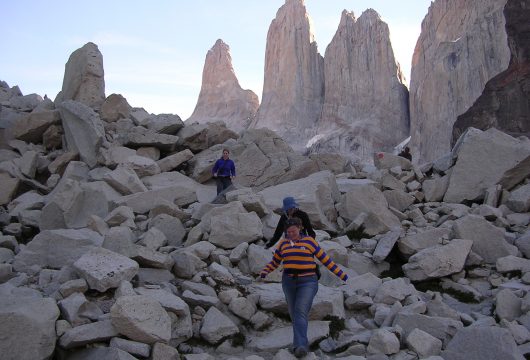
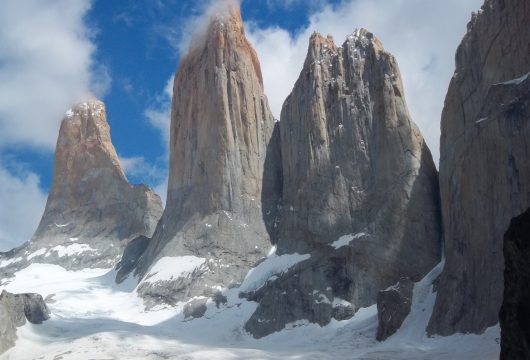
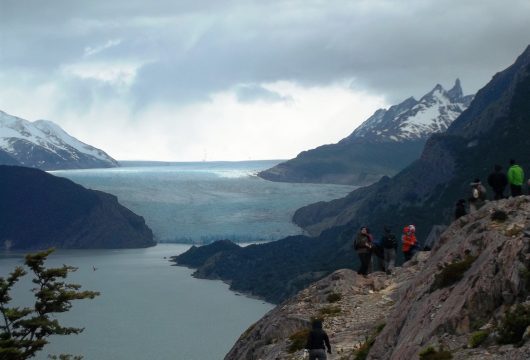
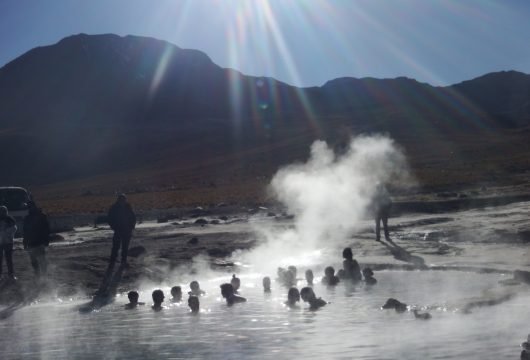
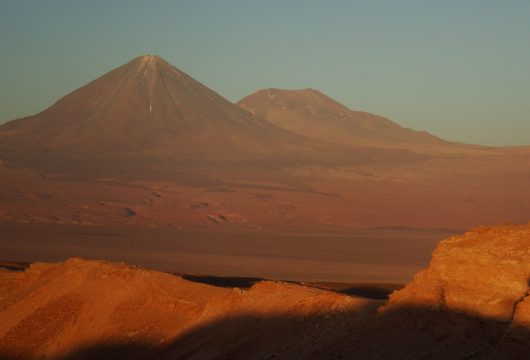
 a Tailor Made Tour
a Tailor Made Tour 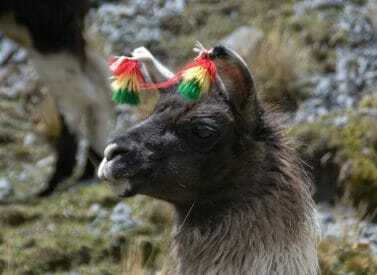
 a Group Tour
a Group Tour 